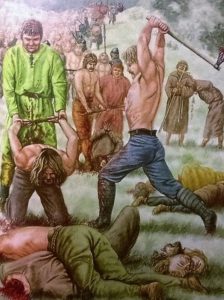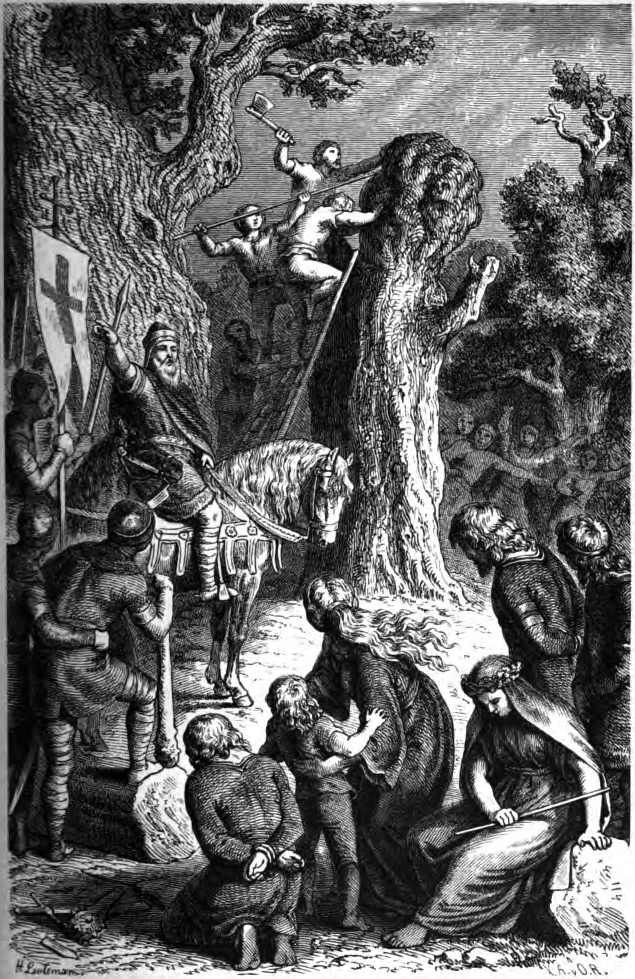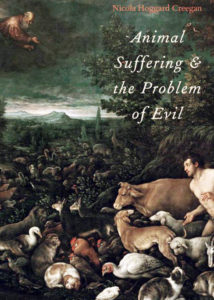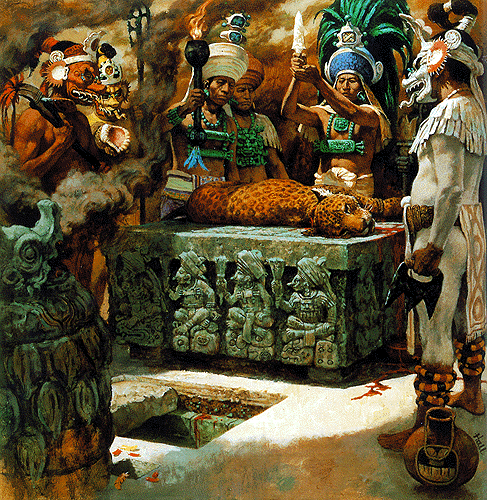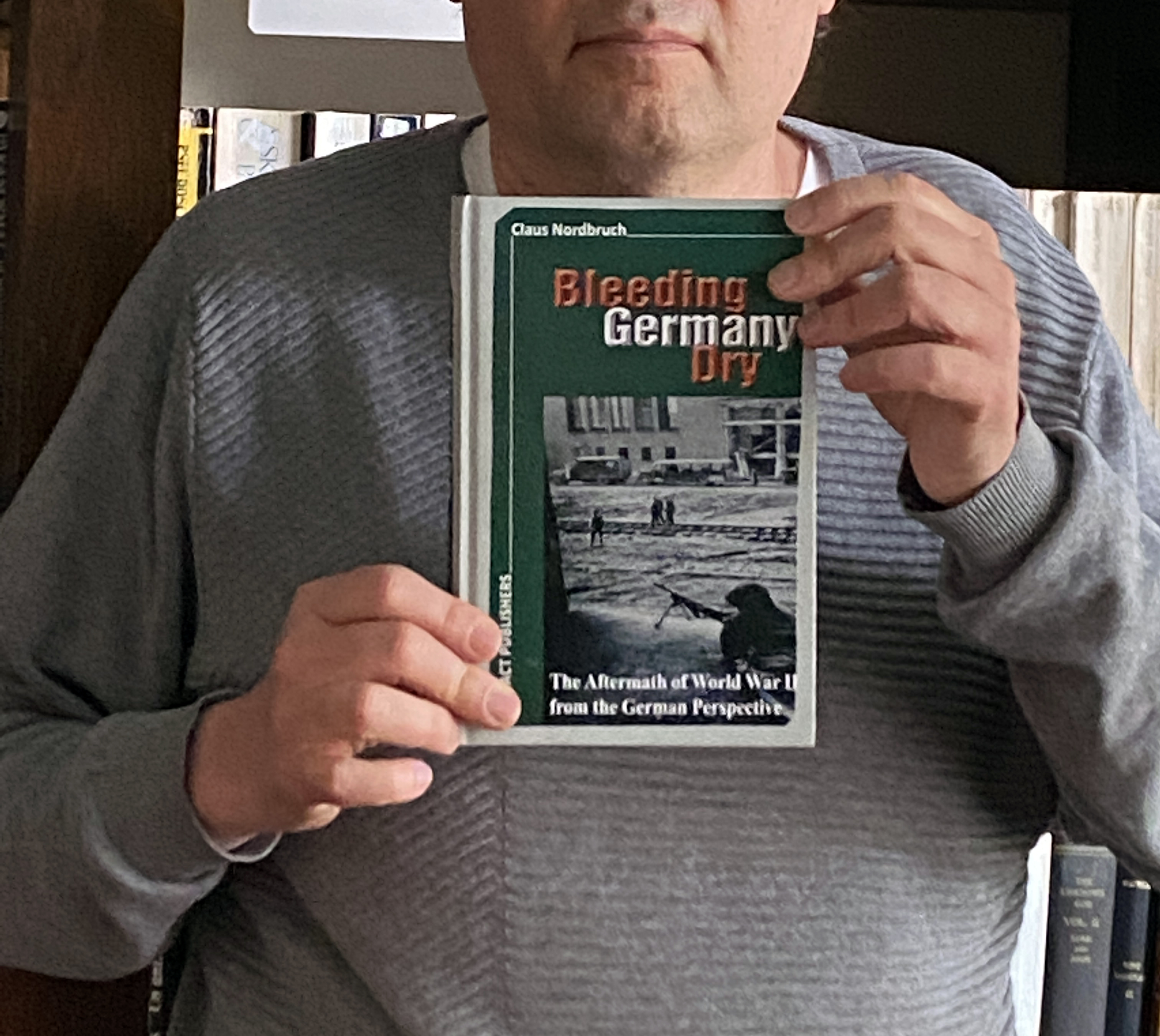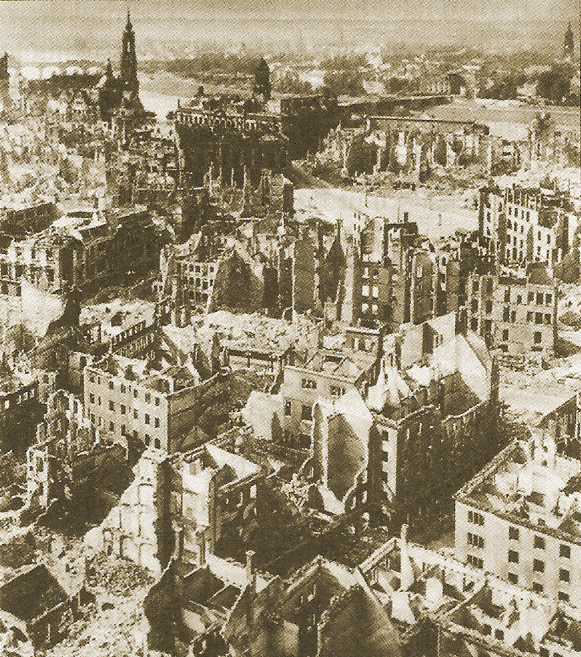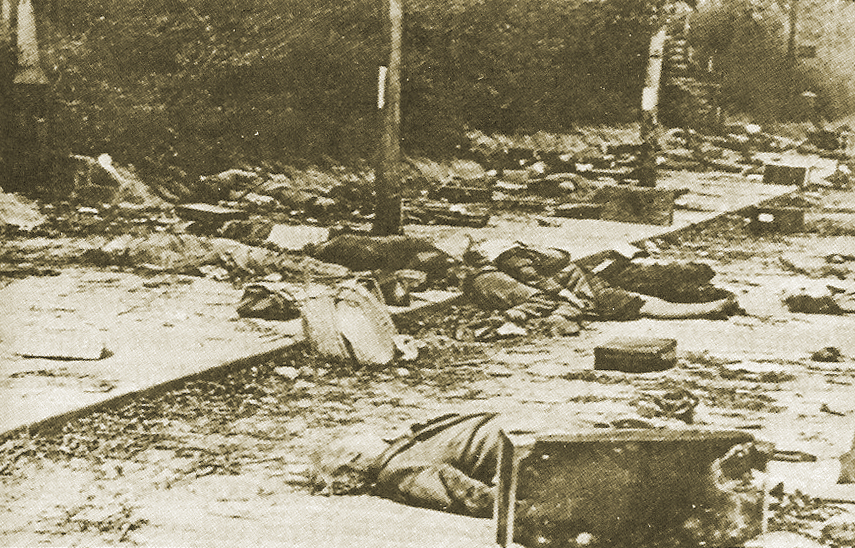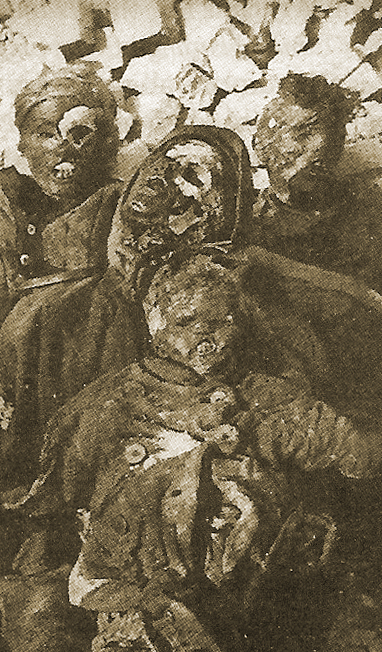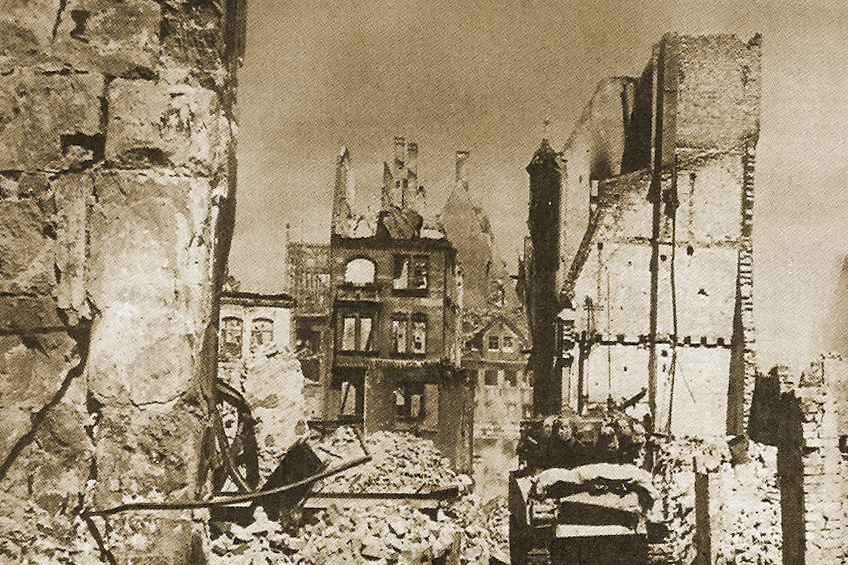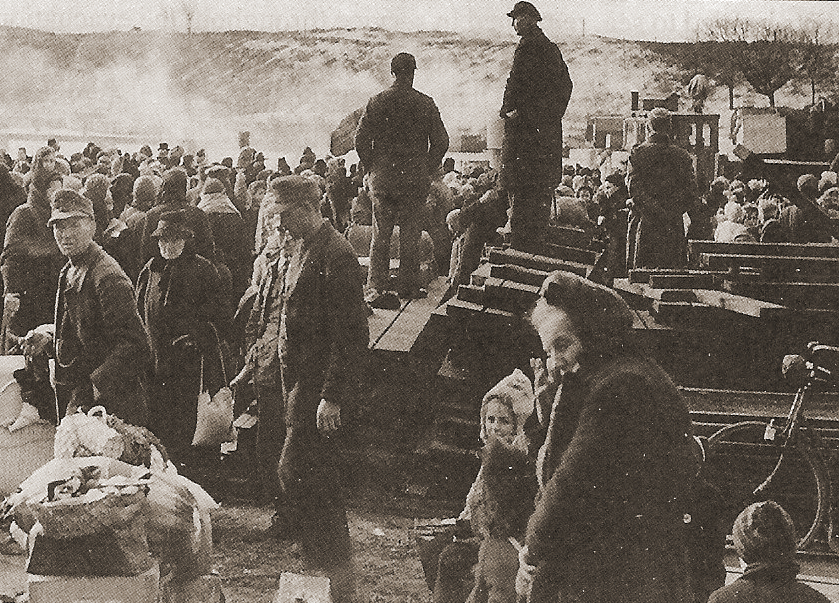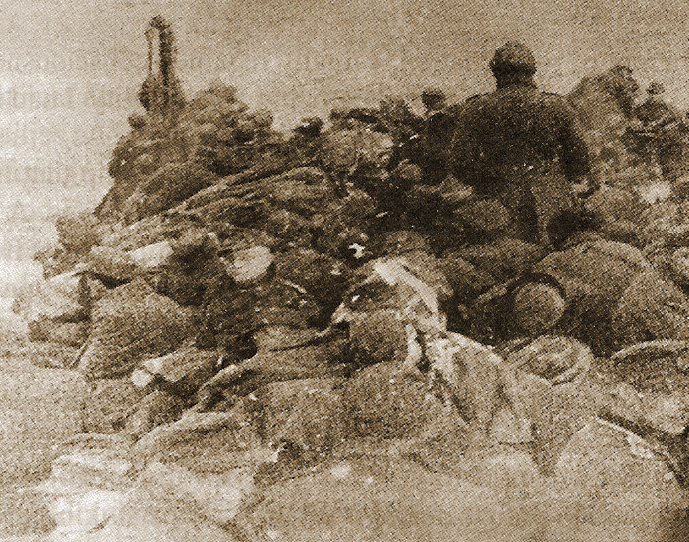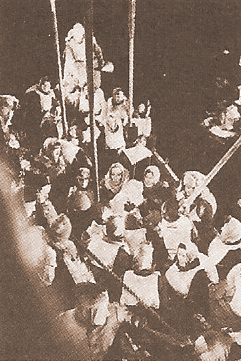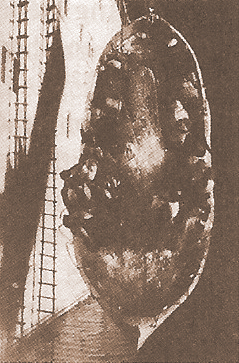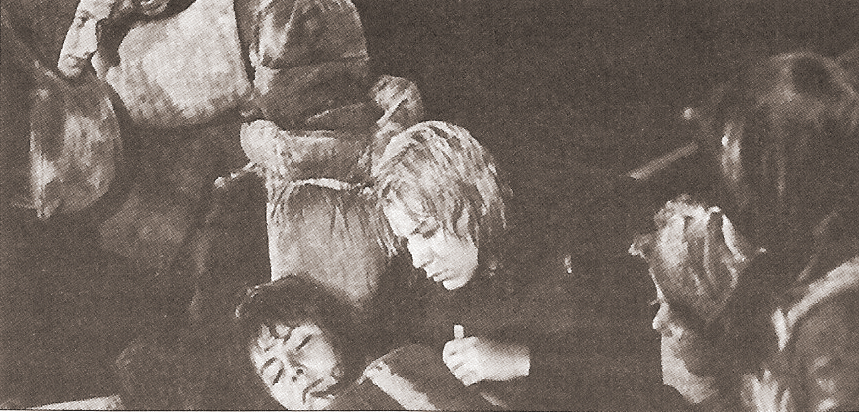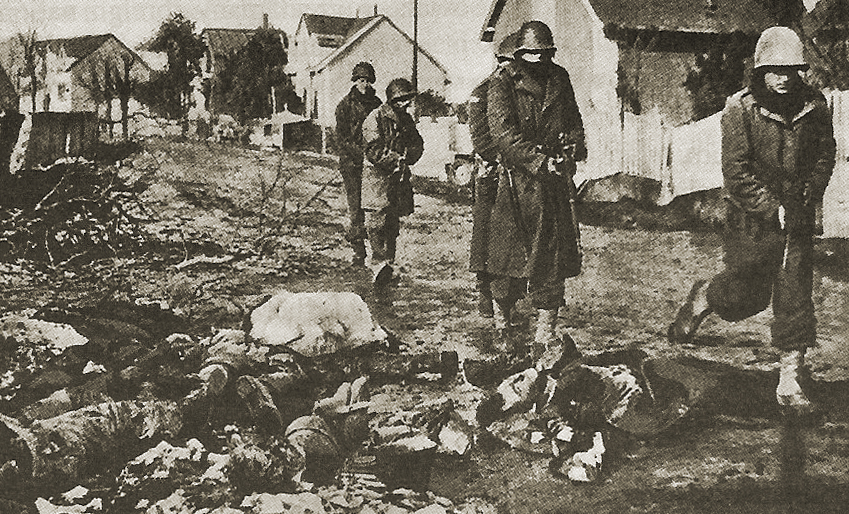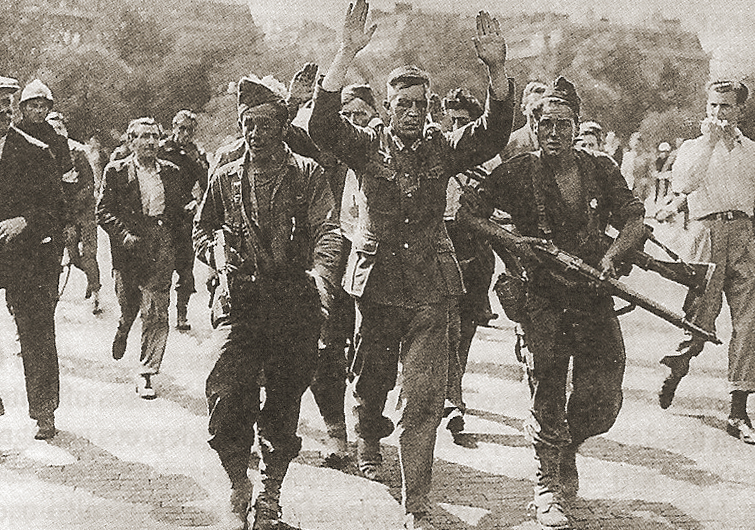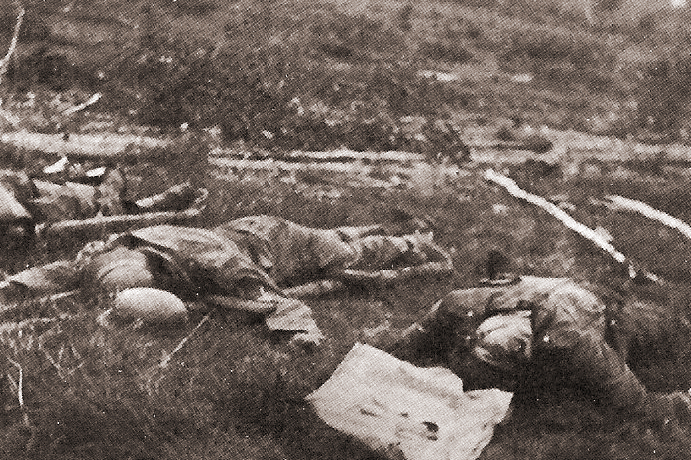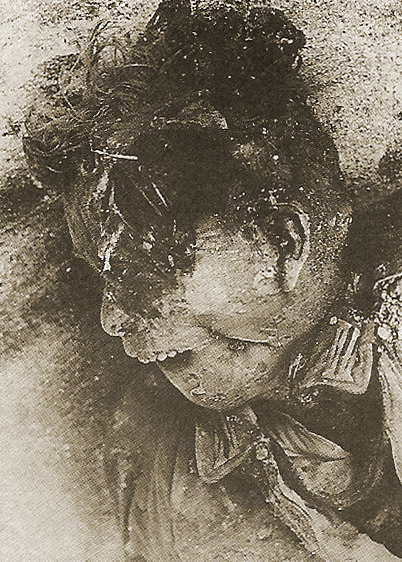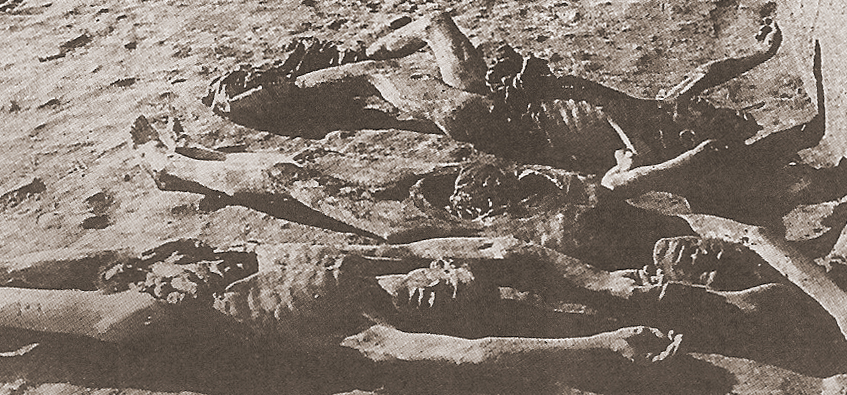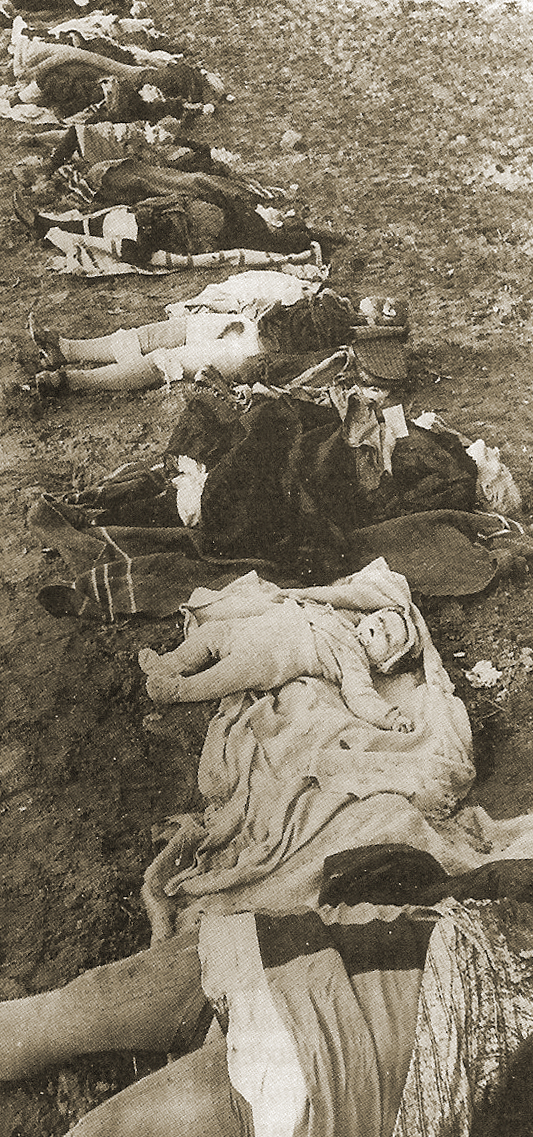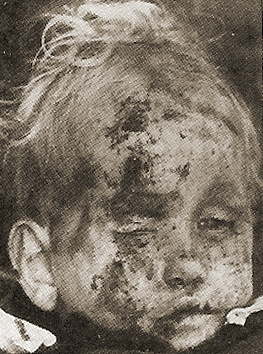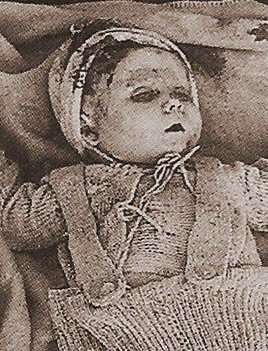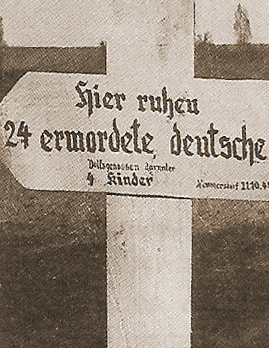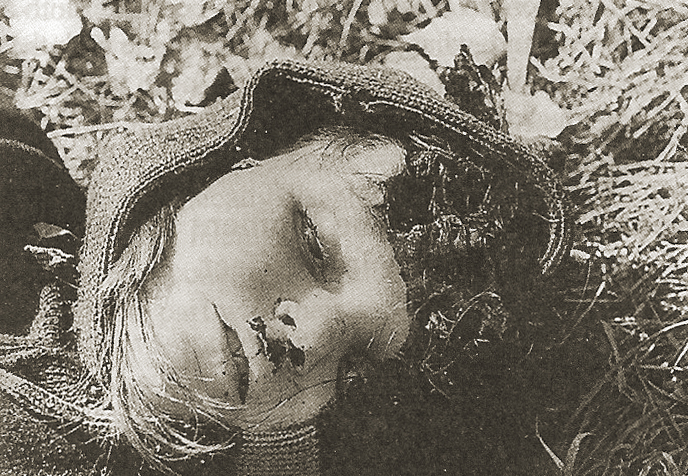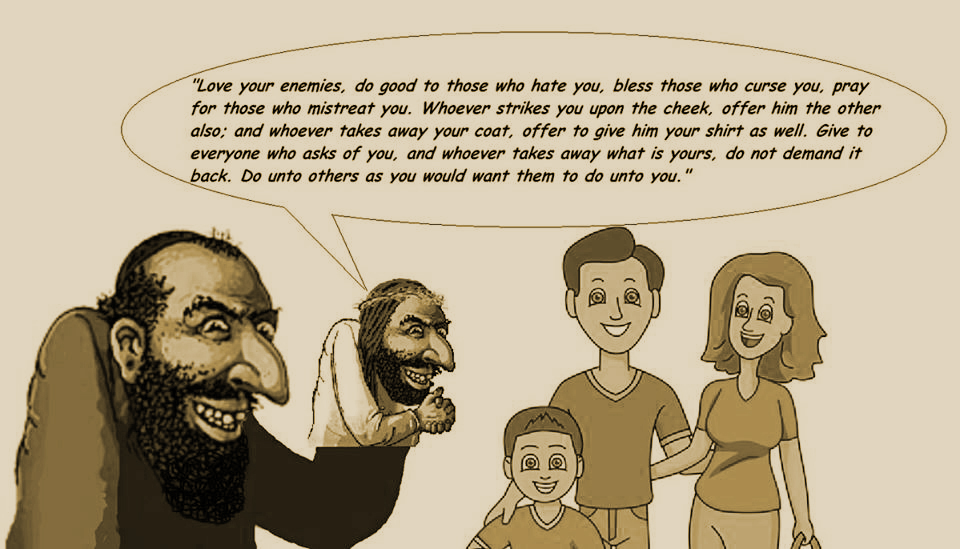
Editor’s note: The following is my abridgement of Francis Parker Yockey’s chapter on his country, the United States, from Imperium: The Philosophy of History and Politics.
I recently speculated that William Pierce didn’t include a chapter on the US in his history of the white race because he didn’t want to put it in a bad light. Since I have been recommending Pierce’s Who We Are as a must-read, the absence of such a chapter moved me to use Yockey to fill the gap, but this very intelligent man failed to mention the American Christian ethos as a key factor in understanding the empowerment of Jewry.
Ben Klassen mentioned the anecdote that when he wanted to name the chosen people, some pious Christians of his adopted country, the US, put up all kinds of resistances. These fiascos led Klassen to conjecture that perhaps Christianity was a psyop to keep us from seeing the depredations of the subversive tribe. On this point, the Ukrainian-born Klassen had a better grasp of the American tragedy than Yockey, though intellectually he was Yockey’s inferior.
If I am to choose the below entry for a new collection of essays once I can relaunch my Daybreak Press, my above words will have to accompany that compendium as well. Yockey’s abridged chapter is over eight-thousand words long. But it never hurts to read Yockey’s Imperium. Yesterday when I read this chapter I was surprised that Yockey mentioned the Hellstorm Holocaust committed by his compatriots in Europe. He had a privileged mind, on a par with Pierce and Revilo Oliver. It is a real disgrace to our cause that, before I was two years old, Yockey died at the age of forty-two, in an American prison.
______ 卐 ______
The leaders who brought about the union were principally Washington, John Adams, Franklin, Pinckney, Rutledge — and, above all, Alexander Hamilton, the greatest statesman ever to appear in America… Hamilton wanted a monarchical State, on European traditionary lines, but Rationalist ideology and propaganda was too strong to be overcome and these demanded a republic.
The American ideology
This organic individualism was formulated in written constitutions and in a literary-political literature. Typical of the spirit of this literature is the Declaration of Independence. As a piece of Realpolitik, this manifesto of 1776 is masterly: it points to the Future, and embodies the Spirit of the Age of Rationalism, which was then ascendant in the Western Culture. But, in the 20th century, the ideological part of this Declaration is simply fantastic: “We hold these truths to be self-evident: that all men are created equal; that they are endowed by their creator with inherent and inalienable rights; that among these are life, liberty, and the pursuit of happiness; that to secure these rights, governments are instituted among men, deriving their just powers from the consent of the governed; that whenever any form of government becomes destructive of these ends, it is the right of the people to alter or to abolish it, and to institute new government, laying its foundation on such principles, and organizing its powers in such form, as to them shall seem most likely to effect their safety and happiness.”
In 1863, the charlatan Lincoln delivered an address in which he speaks of America as “a nation, conceived in liberty, and dedicated to the proposition that all men are created equal.” He then went on to say, referring to the War of Secession, then in progress, “We are engaged in a great civil war, testing whether that nation, or any nation so conceived and so dedicated, can long endure.”
This ideology continued right into the middle of the 20th century, and was even, after the First and Second World Wars, when a totally different and utterly incompatible outlook was in the ascendant, offered to the home of the Western Civilization as a model to imitate somehow. It was only the entirely fortuitous material success which attended American arms that enabled this ideology to survive late into a century which had outgrown it, and, not because it is important as a political outlook, but solely because it is an effective technique for splitting and disintegrating Europe, must this archaic ideology be examined here.
The Declaration of Independence is saturated with the thinking of Rousseau and Montesquieu. The basic idea, as in all Rationalism, is the equating of what ought to be with what will be. Rationalism begins with confusing the rational with the real, and ends by confusing the real with the rational. This arsenal of “truths” about equality, inalienable and inherent rights, reflects the emancipated critical spirit, devoid of respect for facts and tradition. The idea that governments are “instituted” for a utilitarian purpose, to satisfy a demand of “equal” men, and that these “equal” men give their “consent” to a certain “form” of “government,” and then abolish it when it no longer serves the purpose — is pure Rationalistic poetry, and corresponds to no facts that have ever occurred anywhere. The source of government is the inequality of men — this is the fact…
Contrary to a certain messianic feeling in America, America is not completely unique. Its morphology and destiny are readable in the history of other colonies, in our own, and in previous Cultures.
The reference in the Independence Declaration to government as having the purpose of effecting the “safety” and “happiness” of the population is more Rationalistic nonsense. Government is the process of maintaining the population in form for the political task, the expression of the Idea of the Nation.
The quotation from Lincoln still reflects the Age of Rationalism, and his contemporary Europe could feel and understand such ideology, although, since State, Nation, and Tradition existed still in Europe, even if weakened, there was always resistance to Rationalist ideologies, whether of the Rousseau, Lincoln, or Marx variety. No nation was ever “conceived in liberty,” and no nation was ever “dedicated to a proposition”…
The ideas of the constitution were mostly derived from the writings of Montesquieu. The idea of “separation of powers” in particular comes from this French theorist. According to this theory, the powers of government are three, legislative, executive, and judicial. Like all crystal-dear Rationalistic thinking, this is muddy and confused when applied to Life. These powers can only be separated on paper, in Life they cannot. They were never actually separated in America, although the theory was retained that they were. With the onset of an internal crisis in the 30’s of the 20th century, the entire power of the central government was openly concentrated into the executive, and theories were found to support this fact, still calling it “separation”…
In the 20th century, when the Rationalist type of ideology had been discarded by the advancing Western Civilization, the American universalizing of ideology turned into messianism — the idea that America must save the world. The vehicle of the salvation is to be a materialistic religion with “democracy” taking the place of God, “Constitution” the place of the Church, “principles of government” the place of religious dogmas, and the idea of economic freedom the place of God’s Grace. The technic of salvation is to embrace the dollar, or failing that, to submit to American high-explosives and bayonets.
The American ideology is a religion, just as was the Rationalism of the French Terror, of Jacobinism, of Napoleonism. The American ideology is coeval with them, and they are completely dead. Just as inwardly dead is the American ideology. Its principal use at the present time — 1948 — is in splitting Europe…
The ideology of a people is merely intellectual clothing. It may, or may not, correspond to the instinct of that people. An ideology may be changed from day to day, but not the character of the people. Once that is formed, it is definite and influences events far more than they can influence it. The character of the American People was formed in the Secession War.
The War of Secession, 1861–1865
Politics in America in the European sense there was none…
This dependence of party-organization upon a supply of funds brought about the situation in which rich men were able to make the party-leaders and party-organizations run things to please them. Even a party-leader in office was not independent, for the rich man alone could keep him there. The name given in the books to this type of government is plutocracy, the rule of money. This was the American form during the whole 19th century, and it continued to the year 1933.
The source of the wealth of the richest men in America during the period 1789–1861 was manufactures and trade. The richest men were found in the Northern states, the manufacturing and trading places. The Southern states had a totally non-plutocratic organization. A society arose there on a patriarchal and hierarchical basis. Half of the population belonged to the African race and was held as slaves by white land-owners and planters. Slavery was less efficient than industrialism, for capitalistic purposes, because the slaves enjoyed complete security — protection against illness, unemployment, old age — whereas the Northern factory-workers were as completely unprotected in these respects. This gave the Northern industrialist one more advantage over the humanitarian slave-owner. The industrialists’ “cost of production” were cheaper. Factory-workers who were wiped out by illness or other catastrophe were not the responsibility of the industrialists — they had only the disadvantages of slavery, whereas the Africans in the South had its advantages as well…
Once any issue, from whatever sphere of Life it derives, becomes of sufficient intensity to become political, other motives come in to support it. Thus Yankee ideologists fastened on the idea of slavery and made it a war-issue for the masses in the Northern states. The financial labor-exploitation of the Northern capitalists was held up as humanitarianism, and the patriarchal care of the Southern planter was branded as cruelty, inhumanity, and immorality. The ideological side of this war presaged coming American war-conduct…
This War was the largest-scale war in the Western Civilization up to the First World War. The armies numbered millions, the theater of war embraced more than a million quadrate kilometers. Railroads and ironclads entered tactics for the first time.
Napoleon had calculated, from his experience on 150 fields, that the ratio in warfare of the spiritual to the material is as three is to one. Assuming this to be true, the defeat of the South was the result of Yankee material superiority of more than three times.
This war had many lessons for Europe, but was mostly ignored in the European capitals, which were still in the nationalistic petty-state period, and not capable of large-space thinking. It showed the enormous military potentiality in America, it showed the Yankee character, which was thenceforth to be the American spirit, it showed the enormous will-to-power of the New York plutocracy — it showed, in short, that a base for a world-power had been laid here. The only European power which noticed it was the only one capable at that time of large-space thinking — England, and England’s attitude toward the War was throughout one of benevolent neutrality toward the South, to say the least. England was prevented only by the attitude of Russia from declaring war on the Yankee government…
The history of American imperialism
The great Hamilton, at the very beginning of the union, had counseled the annexation of Cuba, and others demanded it during this decade, but it was not to become actual until 1900. But at this time, occurred an event that ranks with the great audacities of History: the manifesto to be known as the Monroe Doctrine was delivered in the year 1823. This manifesto announced that America was preempting an entire half of the globe for itself… South America presented an inherently uninteresting field for further imperialistic ventures by the powers, and it thus happened that a tradition of success was slowly established in American foreign policy. The Calvinistic feeling spread that America was predestined to rule whatso it would. Almost a century elapsed before the “doctrine” was challenged, and by that time, the military force was present in America which its maintenance presupposed…
During the 30’s Americans had infiltrated into the Mexican Empire, and by a successful revolt, they separated the vast area of Texas from Mexico. Less than ten years had gone by before this area was annexed by the union. An area larger than any West-European power had been seized with only small-scale fighting. In 1842, by treaty with England, the northwest boundary was extended. Oregon was definitely incorporated in 1846…
After the War of Secession, the American union smashed the French attempt to add Mexico to its empire, and allowed Maximilian to be shot by a revolutionary firing squad. Also shortly after that War, Alaska was acquired by Yankee imperialism. This territory, of almost a million quadrate kilometers, was purchased by America from Russia for a trivial sum. In the same decade the border with Mexico was again rounded off, this time by a small money payment instead of a war, in the transaction known as the Gadsden Purchase.
American imperialism was everywhere active during the second half of the 19th century: Hawaii, Chile, Cuba, Colombia, China, Japan, Siam, Samoa. The American fleet bombarded foreign ports at will in the colonial areas of the world, and sent landing parties ashore when necessary to secure submission to American commercial-imperialistic or territorial demands…
The Spanish-American War marked, what the War of Secession had foreshadowed, the emergence of America as a world-power. This made seven world-powers at that time; the others being England, France, Germany, Austria, Russia, Japan. Among these, only Russia, Germany, and England were in the first rank. America was excluded solely by reason of its geographical isolation. It could act against a world power in the Eastern hemisphere only with allies, and in a subordinate role. This was the situation at the beginning of the 20th century, the Age of Annihilation-Wars…
For its empire, America had fought only one large-scale war. The first war, that of 1775, was for independence, and the War of 1812 is more accurately called the Second War for Independence. The War of Secession extended the Yankee empire southward, removing an emerging power from the North American continent, and this was the sole serious imperial war Yankee America had to undertake in its century of empire-building. For the landing parties all over Central America, the Mexican War, the fighting in Japan, China, and in the Pacific islands, the Spanish War, all had had slight casualties. Never before had an imperial power acquired so much territory and influence for such a trivial price in blood.
Yet this was not understood, either in Europe or in America. Americans were either embarrassed or smug about their empire. Europeans either did not know about it, or thought it was the result of wise and mature political-thinking. Neither Europeans nor Americans wrote or thought much about the new world-power, its potentialities, its soul, its imperial abilities.
Certainly no power in Europe, no government, no person, in 1900 thought that it was within the realm of possibility that within two decades an American army of two millions would be transported across the Atlantic to fight in an intra-European war.
The American Revolution of 1933
From 1890 on began the Jewish invasion of America. Within the next fifty years, the number of Jews in America increased from negligible proportions to a number estimated between 8 and 12 millions. New York City became in this period predominantly a Jewish capital. Of this Jewish immigration, approximately 80 per cent were Ashkenazic Jews. American reaction inevitably began against the phenomena which inevitably accompanied the immigration of these vast numbers with their own world-feeling, who immediately began to influence the American life in every sphere and on every plane. A clever propaganda making use of the American ideology to serve Jewish purposes was the answer to this reaction. America became a “melting pot,” after the phrase of the Jew Israel Zangwill, and the purely quantitative American ideology lent this picture convincingness in an America still in the money-obsession stage.
The word “American” was changed by this same propaganda to mean an immigrant who had improved his personal circumstances by coming to America, and to exclude the native American who was displaced by the immigrant. If the latter showed resentment, he was called “un-American.” Thus native American movements like the second Ku Klux Klan, formed in 1915, as an expression of the reaction of the American organism to the presence of the foreign matter, were more or less successfully called “un-American” by the propaganda organs in America, which even by that time had come under strong Culture-distorting influences.
The words “ America” and “American” were stripped of all spiritual-national significance, and were given a purely ideological significance. Anyone who came to America was ipso facto an American, regardless of the facts that he retained his own language, lived in his own racial-national group, nourished his old connections with Russia, South-eastern Europe, or the Eastern Mediterranean, and had a purely economic relationship with America. Americans of native stock however, the representatives before history of the new unit in the Western Civilization called the American People, were not ipso facto Americans. If they nourished any national feelings of exclusiveness whatever, they were “un-American.”
This transvaluation of values is an invariable accompaniment of Culture-Distortion, and represents a superpersonal life-necessity of the Culture-distorting element. The values of the host-Culture, or host-colony, are hostile to the life of the Culture-distorter, and for him to adopt them would be to disappear as a higher unit. Assimilation of the Jews would mean that there would no longer be a Jewish Idea, a Jewish Culture-State-Nation-People-Religion-Race. In fighting against nationalistic feelings in America, the Jewish Idea is fighting for its continued existence against the hostile Western Civilization. It is a tribute to the political skill of the leaders of Jewry that they were able in the 20th century to identify their Jewish Idea with America, and to label the nationalism of America with the term “un-American.”
* * *
Culture-distortion in America, as elsewhere in the Western Civilization, was only able to twist, warp, and frustrate the soul of the host. It could neither kill it nor transform it. American autopathic tendencies, arising from the disintegratory influence of Rationalism and Materialism, are the source of the possibilities of which the Culture-distorter made use. His technique was to push them ever further in the direction of decadence, but at the same time he could always refer to Rationalistic doctrines, themselves products of the Civilization-crisis, as a semi-religious basis for his disintegratory work.
Thus the “equality” rhetoric of the Independence Declaration of 1775, and pious platitudes from Lincoln and other party-politicians, were used as the basis of the “tolerance” propaganda which teaches Americans that they must not in any way, not even in thought, discriminate against the Jew. This propaganda is spread from the highest official places down to the level of home, school, and church…
The whole result has been to put the native American completely on the defensive, to confer a privileged position on the Culture-distorter, who embodies at the highest potential the idea of alienness, and to disintegrate progressively the American national feeling. Culture-distortion to this degree would not have been possible in Europe, because of the higher Culture-sensitivity and the higher exclusiveness of Europe, even under democratic-materialistic conditions…
World-outlook
Music is seldom heard in America, having been replaced by the cultureless drum-beating of the Negro. As an American “musicologist” put it, “Jazz rhythm, taken from wild tribes, is at the same time refined and elementary and corresponds to the disposition of our modern soul. It incites us without pause, like the primitive drum-beating of the prayer-dancer. But it does not stop there. It must at the same time take account of the excitability of the modern psyche. We thirst for quickly exciting, constantly changing, stimuli. Music has an excellent, time-honored means of excitation, syncopation.”
American literature, which produced Irving, Emerson, Hawthorne, Melville, Thoreau and Poe, is today entirely represented by Culture-distorters who make Freudian and Marxist motives into plays and novels.
American family life has been thoroughly disintegrated by the Culture-distorting regime. In the usual American home, the parents actually have less authority than the children. The schools enforce no discipline, nor do the churches. The function of forming the minds of the young has been abdicated by all in favor of the cinema.
Marriage in America has been replaced by Divorce. This is said with no paradoxical intent. In the large cities, statistics show that one of every two marriages ends in divorce. Taking the country as a whole, the figure is one in three. This situation can no longer be described as Marriage, since the essence of Marriage is its permanence. The divorce trade is a large business upon which lawyers, private detectives and other charlatans thrive, and from which the spiritual standards of the nation suffer, as reflected in the emotionally indifferent attitude of American children.
The Western erotic, grounded in the chivalry of Gothic times, with the concomitant honor-imperative of the centuries of Western history, has been driven out. The ideal of Wedekind, the Culture-distorter who preached compulsory Bohemianism in Europe around the turn of the 20th century, has been realized by the Culture-distorting regime in America. Inverted Puritanism has arisen. In this new feeling, the Puritan outlook is retained in sexual matters only to scoff at it in the cinema and in literature. Baudelaire’s thesis “In evil only lies bliss” has been taken over by the distorter, and has resulted in the progressive disintegration of American morality in all spheres. In this effort, jazz music is a useful appurtenance, for this primitive beating is nothing but the expression of lust in the world of sound, a world which is capable of expressing all human emotions, both higher and lower.
A part of this general perversion is the physical-youth-mania that has been spread abroad in America. Both men and women, but especially the latter are inwardly obsessed with the idea of remaining physically young in appearance. Advertising plays upon these fears and commercializes them. The “girl” is the ideal feminine type. The mature woman aspires to be a girl, but not vice versa. A “girl” cult has come into existence, which, together with cinema, revue, jazz, divorce, disintegration of the family, and uniformity, serves the vast purpose of destroying the national feelings of the American.
Together with uniformity is the technique of excitement. The press presents every day new sensations. For the general purpose, it is quite immaterial whether the sensation is a murder, a kidnapping, a government scandal, or a war-scare. But for particular, political purposes, the latter sensations are the most effective, and during the years of preparing the Second World War, the distorter administered every day a new “crisis.” The process increased until the population was ready to welcome the outbreak of war as a relief from the constantly mounting nervous tension. When the War did appear, the distorter immediately called it a “World War” despite the fact that only three political powers were engaged, and the strongest powers were not involved. It was, of course, intended to rule out the possibility in the American mind of any localizing of the War, and to prepare for American intervention.
The straining after excitement, pleasure, and constant motion has created a vast night-life, a crime underworld which staggers the imagination of Europeans, and a hurrying from one thing to another which excludes the possibility of contemplation, or individual culture. Almost one per cent of the entire population makes its living from professional crime. The art of reading has been taken away from the Americans, since the idea is to “do something.” Individual culture is generally strangled under such conditions, and the prevailing mass-ideals impose limitations on the form of such personal culture as is attained. All history, all thought, all events, all examples, are used to prove the soundness of the ideal of mass-life, and of the American ideology.
* * *
In the Rationalistic and Materialistic atmosphere of 19th century America, there was only a very weak link with the sublime Western Gothic traditions of the spiritualized meaning of life, but under the Culture-distorting regime since 1933, America has been completely disenchanted. On every plane, the ultimate reality of the world and life is materialistic. The aim of life is “happiness.” This must be so, since life itself is only a physico-chemical process, and articles appear which treat as imminent the discovery of a “formula” for life by “scientists.”
The contractual side of the old Puritan religion, which regarded Man and God as keeping accounts with one another, has been pushed to its uttermost limits, and all living is simply changing legal relationships. Patriotism is simply a legal duty to the world-proposition called America, which has been equated with the mission of distorting the entire Western Civilization through a process of “educating” Europe. Heroism in the Western sense is unknown, and the hero whom the population admires is a capitalist en grand who has converted a great part of the public wealth into his private resources, or else a smiling film actor. Such a thing as a great spiritual movement or a national rising is not understood in America, first because it has had nothing of the kind in its history, and secondly, because the distorter has made all such things ridiculous. The American is taught that life is a process of cultivating friendly relations with all, joining as many clubs and secret societies as possible, and confining all his thought and effort to the personal plane.
The “happy-end” is the ideal of life and literature. There is no thought of bearing up under the bitterest and most crushing blows of Fate. These are overcome by avoiding one’s glance. The lucky man, and not the man who has suffered in silence and become stronger, is the central figure in the happy-end literature.
The opposition between the Western idea of Destiny-fulfillment and the Culture-distorter’s disintegrating substitute called “happy-end” is actually the focal idea of the world-outlook that he wishes to force upon the prostrate American nation and its parent Western Civilization. The irreconcilability between these two ideas extends from the personal plane upward through national economy, society, State, religion and ethics.
The great Western Life-feeling is the necessity of being one’s self, of preserving that within one which cannot be compromised, which is synonymous with Soul, Destiny, Honor, Race. The distorter’s idea of “happy-end” is opportunistic, weak, degenerate, and revolting to the Western honor-feeling. The empty, smiling, face, the uniform mind, the senseless chasing after noise, movement, and sensation, the obsession with moneymaking and money-spending, the rejection of all spiritual standards of attainment — all this merely reflects the basic interpretation of Life as a seeking for a happy-end. For happiness one will compromise anything, give anything, sell anything. Happiness becomes synonymous with pursuit of economic and sexual motives. It absolutely excludes any profitless struggle against odds, merely in order to be one’s self. Understanding and respect for the tragedy of Life, the magic of Life, the power of the Idea, are precluded by the happy-end feeling.
Any idea of this kind is quite impossible for Europeans in the 20th century, even if they had not seen the horrible catastrophe of the Second World War, in which Europe succumbed to the double-invasion of barbarians and distorters. No great artist, no religionist, no deep thinker, has ever deluded himself that Life has the meaning of “happy-end.” In miserable and crushing times, the Western man trains himself rather to bear whatever blows Fate may have in store for him. He does not talk of either happiness or unhappiness, and he does not try to avoid facts by looking away from them. Looking away is no solution, but only a postponement of a later reckoning. Happy-end has a purely negative significance. It is a denial of Life, an escape from Life. It is thus a deception, and an untruth.
The racial chaos in America, which, deliberately perpetuated by the distorter, delivers the American nation more securely into his hands, is only possible because of the de-nationalizing program for Americans. This program begins with propaganda in the schools to the effect that America was not colonized, cleared, conquered, or built by Americans, but by a great conglomeration of aliens. The contributions of the Jew and the Negro are taught as the decisive formative influences on the “American dream.” In New York State, Shakespeare’s Merchant of Venice is forbidden to be taught in the schools. The promoting of the anti-spiritual and anti-national “happy- end” idea, with its economic and sexual obsession, and its social atomism, is the prerequisite of continuing the whole program of degeneration.
Races and nations express themselves at their highest potential in strong individuals, who embody the prime national characteristics, and acquire immense historical symbolic significance. Therefore, the efforts of the Culture-distorter to strangle American nationalism take the form of an offensive against individualism, not against freakish, insane, individualism, but against the only kind that is historically effective — individualism which concentrates in itself a higher Idea, and is devoted to its service.
Thus the highest social value is “getting along with people.” Strong characteristics of independence or strength must be put aside, and the ideal of mediocrity embraced. The universal spirituality, the same intellectual nourishment for all classes, replaces the natural, organic stratification of society. This nourishment again has only a quantitative measure of value. Just as the best product is the one most advertised, so the best book is the one that has the largest sale. The best newspaper or periodical is the one with the largest circulation. This equation of quantity with quality is the complete expression of the mass-idea, the denial of individuality.
A natural corollary of the happiness-sickness is pacifism. Only intellectual pacifism is meant, for the Culture-distorter knows how to make use of the fighting instincts of the native American type. Intellectual pacifism is war-propaganda. The enemy is identified with the idea of war itself, and to fight him is to fight war.
Naturally Hollywoodism is incapable of rousing a population to sternness, sacrifice, heroism, renunciation. Therefore American armies in the field in the Second World War had to be supplied with a vast, never-ending stream of picture-books, chocolate, soft-drinks, beer, juke-boxes, moving-pictures, and playthings of all sorts.
Fundamentals cannot be evaded, and so it was that despite eight years of preparation by the most intense bombardment of emotional artillery the world has ever seen, through film, press, stage, and radio, there was no war-enthusiasm whatever in the American population, and a negative feeling in the armies which were massed against Europe in the Second World War. Out of 16,000,000 men who were impressed into the armed forces from start to finish of America’s brief military participation in the Second World War, less than 600,000 were volunteers. Almost twice this many volunteers out of half as many people were raised in one year in one European nation in the First World War. A large part of the American volunteers had already been notified of imminent conscription, and volunteered for appearance’s sake…
The organic unit which regards the disintegration of America as a part of its own life-mission is, at its very widest base, only ten per cent of the population of the American Union. And within this ten per cent, it is a comparatively few brains, and a reliable stratum of leaders who actualize the policy of the Jewish Culture-State-Nation-Religion-People-Race. To these leaders, the great mass of their own people are mere soldier-material in the non-military war against the Western Civilization all over the world. Nor need these brains be regarded as animated by any malice or evil motives. To them the Western Civilization is the repository of the collective evil and hatred of the world, the source of a thousand years of persecution, a cruel and unreasonable monstrosity, a sinister force working against the Jewish Messiah-idea.
Propaganda
Thus, in America, the country where mass-thinking, mass-ideals, and mass-living dominate the collective life, propaganda is the prime form of dissemination of information. There are no publications in America addressed solely to the intellect; a Culture-distorting regime rests on its invisibility, and independent thinking by strong individuals is ipso facto hostile to such a regime. Nor are there any publications which purvey only facts. Any facts, and any viewpoints, are co-ordinated, with their presentation, into the ruling propaganda-picture.
The techniques of American propaganda is inclusive of every form of communication. The leading instrument is the cinema. Every week, some 80,000,000 people attend the cinema in America, there to absorb the propaganda message. During the period of war-preparation, 1933–1939, the cinemas produced an endless succession of hate pictures directed against the European Revolution of 1933, and its 20th century outlook and actualizations… It should be said that in America, effectiveness of propaganda is measured solely by the numbers which it reaches, since the mass-thinking ideal has triumphed over individuality, quality, and intellectual stratification of the population.
Fourth is the book press. Only such books may be printed as represent or fit into the larger propaganda framework. Thus an edition of the Arabian Nights for children was recently withdrawn in America because some of the contents were said to have the possible effect of prejudicing readers against Jews, and one objectionable illustration showed an unscrupulous merchant with the features of a Jew, in the story about Aladdin and his lamp. During the years 1933–1939, the larger policy of the distorter was entirely unquestioned in any paper, book, or magazine of wide circulation.
Next are the universities and colleges. The mass-idea, as applied to education means that “higher education” is generalized to an extent that the high academic standards of Europe make impossible. America, with only half the population of the Western homeland, has more than 10 times as many institutions granting academic degrees. Actually what is disseminated in these institutions is primarily a slightly more esoteric version of the prevailing ideological and propaganda world-view of the Culture-distorting regime…
The propaganda-picture has two aspects, the domestic, and the foreign. The domestic propaganda is a revolutionary one, supporting the American Revolution of 1933. All ideological revolutions, from the French in 1789, through the 19th century ones in Europe, down to the Bolshevik Revolution in 1918, have the tendency to take on the form of a cult. In France Reason-worship was the focus of the religious frenzy; in Russia, it was machine-worship, according to the God Marx. The American Revolution of 1933 is no exception. The central-motive of the new cult is “democracy.” In the propaganda-picture, this concept takes the place of God, as the center and ultimate reality. Thus, a Supreme Court Justice, speaking to the graduating class of a Jewish college, said in 1939: “In a larger sense there is something more important than religion, and that is the actualization of the ideals of democracy.”
The word has been endowed with religious force, and has in fact attained to the status of a religion. It has become a numen, and cannot be the subject of critical treatment. Apostasy or heresy bring immediate response in the form of a criminal prosecution for sedition, treason, income tax evasion, or other allegation. The saints of this cult are the “Founding Fathers” of the War for Independence, particularly Jefferson — despite the fact that they uniformly detested the idea of democracy, and were nearly all slave-owners — and also Lincoln, Wilson, Roosevelt. Its prophets are journalists, propagandists, film stars, labor-leaders, and party-politicians. The fact that the word “democracy” cannot be defined is the surest evidence that it has ceased to be descriptive, and has become the object of a mass-faith. All other ideas and dogmas of the propaganda-picture are referred to “democracy” for their ultimate justification.
Immediately below “democracy” in importance is “tolerance.” This is obviously fundamental to a Culturally-alien regime. Tolerance means primarily tolerance of Jews and Negroes, but it can mean the cruelest persecution of Europeans or other persons with a viewpoint differing fundamentally from the prevailing mass-idea. This persecution is social, economic, and, if necessary, legal.
To continue the atomizing of the host-people… feminism is preached, pursuing the mass-uniformity idea into the realm of the sexes. Instead of the polarity of the sexes, the ideal of the merging of the sexes is promulgated. Women are taught to be the “equal” of men, and the Western recognition of sexual polarity is branded as the “holding down” and “persecution” of women.
Pacifism is preached as a part of the propaganda. This is of course not true pacifism, for that supervenes without anyone preaching it, and often without anyone knowing it, and always without anyone being able to do anything about it. In practice, doctrinaire pacifism is always a form of war-propaganda. Thus, in America, Europe means war, and America means peace. American imperialism is always a crusade for peace. A prominent member of the regime recently spoke of America’s “duty to wage peace around the world.”
“Religious tolerance” is also a part of the propaganda, and it is so interpreted as to mean religious indifference. Dogmas and doctrines of religion are treated as quite secondary. Churches are often merged or separated for purely economic considerations. When religion is not merely a compulsory weekly social amusement, it is a political lecture. Co-operation between the churches is constantly being organized, and always for some utilitarian aim, having nothing to do with religion. What this means is: the subservience of religion to the program of Culture-distortion.
* * *
Far more important to Europe than the propaganda about domestic affairs in America is that about foreign affairs.
The numen “democracy” is used also in this realm as the essence of reality. A foreign development sought to be brought about is called “spreading democracy”; a development sought to be hindered is “against democracy,” or “fascistic.” “Fascism” is the numen corresponding to evil in theology, and in fact they are directly equated in American propaganda.
The prime enemy in the propaganda picture was always Europe, and especially the Prussian-European spirit which rose with such self-evident force in the European Revolution of 1933 against the negative view of life, with its materialism, money-obsession, and democratic corruption. The more surely it appeared that this Revolution was not a superficial political phenomenon, a mere transfer of one party-regime for another, that it was a deep spiritual, total revolution, of a new, vital spirit against a dead spirit, the more violent became the hate propaganda directed against Europe. By 1938, this propaganda had reached an intensity, both in volume and in emotional frenzy, that could not be surpassed. Ceaselessly the American was bombarded with the message that Europe was attacking everything worthwhile in the world, “God,” “religion,” “democracy,” “freedom,” “peace,” “America.”
“Aggressor” was another leading word in the intellectual assault. Again, it did not relate to facts, and was only allowed to work one way as a term of abuse. “International morality” was invented and formulated so that the enemy of the Culture-distorter became ipso facto immoral. If they could not find political reasons for their politics, they were all the more resourceful in creating moral, ideological, economic, and esthetic reasons. Nations were divided into good and bad. Europe as a whole was bad when it was united, and if Culture-distortion was able to secure a foothold in any European land, such land became thereby good. The American propaganda machine reacted with venomous hatred against the European partitioning of Bohemia in 1938. Every European power which had participated in the negotiations was denounced as evil, aggressive, immoral, anti-democratic, and the rest of it…
Any words whatever that had good connotations were linked with the leading catchwords of the picture. Thus Western Civilization was too impressive to treat as a hostile term, and it was used to describe parliamentarism, class-war, plutocracy, and finally — Bolshevik Russia. It was insisted by the propaganda machine during the time of the battle at Stalingrad in the Fall of 1942 between Europe and Asia that the Asiatic forces represented Western Civilization while the European armies were the enemies of Western Civilization. The fact that Siberian, Turkestani, and Kirghizian regiments were being used by the Bolshevik regime was adduced as proof that Asia had saved Western Civilization…
This propaganda announced that 6,000,000 members of the Jewish Culture-Nation-State-Church-People-Race had been killed in European camps, as well as an indeterminate number of other people. The propaganda was on a world-wide scale, and was of a mendacity that was perhaps adapted to a uniformized mass, but was simply disgusting to discriminating Europeans. The propaganda was technically quite complete. “Photographs” were supplied in millions of copies. Thousands of the people who had been killed published accounts of their experiences in these camps. Hundreds of thousands more made fortunes in post-war black-markets. “Gas-chambers” that did not exist were photographed, and a “gasmobile” was invented to titillate the mechanically-minded.
We come now to the purpose of this propaganda which the regime gave to its mentally-enslaved masses. From the analysis in the 20th Century Political Outlook, the purpose is seen to be only one: it was designed to create a total war in the spiritual sense, transcending the limits of politics, against the Western Civilization. The American masses, both military and civilian, were given this mental poison in order to inflame them to the point where they would carry out without flinching the post-war annihilation-program. In particular: it was designed to support a war after the Second World War, a war of looting, hanging, and starvation against defenseless Europe.
The conduct of American foreign affairs from 1933
As was noted in the outline of the general thesis of Culture-distortion as a form of Culture-pathology, the Russian anti-Semitic outbreaks after the Russo-Japanese War, 1904–1905, brought about a rupture of diplomatic relations with the United States. Since no other racial, cultural, national, or religious outbreaks of this kind directed against non-Jewish elements in Russia, or in any other country, had ever caused an American government to break relations, this can only be explained as an example of Culture-distortion. The actual inspiration for this startling international move came from certain elements in the entourage of the then President Theodore Roosevelt, which belonged to the same Culture-State-Nation-People-Race as the victims of the pogrom.
Historians will be able to trace the appearance of Culture-pathology through American foreign policy from about 1900. The immediate period under consideration however is that since 1933, a year of fate for both America and Europe.
The first positive act of a non-routine nature by the revolutionary regime, after its preliminary consolidation of power, was the diplomatic recognition of Bolshevist Russia. It was explained away to a loudly resentful American public as being merely a routine act, without ideological significance, and quite harmless politically. Actually it was the beginning of a cooperation between the two regimes which continued with only surface interruptions until the Russian and American armies met in the heart of the Western Civilization, and London and Berlin had been thrown into the dust.
In 1936, the Bolshevist revolution and the 20th century Western authoritarian spirit met on the battleground of Spain. The officials of the America-based regime privately expressed their sympathy with Red Spain. The unequivocal opposition of the Catholic Church to American aid for Bolshevist Spain prevented intervention. The Catholic Church in America has twenty million adherents, and the Culture-distorting regime had not sufficiently consolidated its power to engage in a domestic conflict of the type that would have resulted. It was about to contest its second national election, and large organized groups were still in the field against it. A blunder in foreign policy could have been fatal at that stage.
The perfection of its election technique continued the regime in office. In October, 1937, the open preparations for a Second World War were begun. It was officially announced that the American government was going “to quarantine aggressors.” The propaganda organs had identified the word “aggressor” with Europe, and the custodians of the European Future. To satisfy nationalist elements, Japan was included in the term, but the regime continued to equip Japan with essential raw materials for its war-industry, while at the same time it refused to sell raw materials to Europe, and boycotted importation into America of European goods originating in areas not dominated by the Culture-distorting regime.
By the fall of 1938, the stage was set for a World War…
In the period after the Second World War, American foreign policy retained its continuity. Occupied Europe was treated as an area to be devastated, factories were dismantled of machinery, which was given to Russia, and other installations were blown into the air as part of a deliberate policy of destroying the industrial-potential of Europe. The population was treated as sub-human, and a large-scale starvation policy was introduced, which continues in 1948.
Although America was exporting food all over the world, not being under any obligation of honor or morality to do so, nevertheless it refused to send enough food to maintain human life into occupied Europe. Human rations were fixed far below qualitative and quantitative minima for health, and within a short time, malnutrition, skin-ailments, infections, and degenerative diseases began to kill millions. In the first wild exultation of its “victory,” the American army forbade its personnel even to speak to the population.
This continued until court-martials became too numerous, and it was discarded while in its place was substituted a violent hate propaganda among the American troops. The population of Europe was treated as totally and essentially inferior to the conquering Americans. It was officially referred to as “the indigenous population.” In public buildings special sanitary facilities were set aside for them, while the superior Americans and Negroes used their own… One European was sentenced to two years imprisonment for a hearsay reference to a Jewish member of the American forces as a “dirty Jew.”
The ghastly dishonor attending the American occupation of Europe is sufficient to show the presence of Culture-alien elements, for no Western nation or colony could possibly proceed to this type of conduct. Its very inner constitution, its historical essence, a thousand-year honor tradition, would preclude the possibility. What Western nation would reduce the women of another to the legal status of concubines, and forbid marriage between its members and those of another Western nation? Yet this is what the American command did. It permitted concubinage, and forbade marriage. As a result of this policy, venereal disease assumed plague proportions in occupied Europe.
In the presence of this starving, disease-ridden European population, the American armies and their families, guarded by guns and barbed wire, live in the houses which their bombs did not damage, and eat an unrationed diet. The spiritual qualities developed by these conditions are not the highest. In the early phase of the occupation, waste food and clothing were actually burned in the physical presence of the starving and freezing “indigenous population.”
When, in the summer of 1947, a food revolt threatened, one of the American governors announced officially that the American people had no duty in fact, in international law, or in morals, to feed its subject population in occupied Europe, and that if a revolt did occur, it would be put down with bayonet and machine gun. That which is here described is only partial, but the pattern of the facts is universal in American-occupied Europe. It continues today, and has a deep and wide influence on European thinking on the most important level…
Among a population which could furnish it with millions of the best soldiers in the world, the Americans conduct themselves with a ferocity and an affected superiority calculated to alienate the “indigenous population” forever. Finding themselves captors of the best military leaders in the Western Civilization, to whom they should go to school, they proceed to hang them for the crime of opposing American armies in the field.
In short, instead of increasing American power, the occupation-policy has decreased American power in every way. This shows conclusively that the motivation of this conduct is outside politics. Its motivation is derived from the complete, deep, and total organic irreconcilability between a High Culture and a parasitic organism within it. This relationship is one transcending ordinary international politics.
It is somewhat similar to the relationship between the Roman legions and the barbarians of Mithridates and Jugurtha, or to that between the Crusaders and the Saracens, or between Europe and the Turk in the 16th century. It is deeper even than these, because of the revenge-twist introduced into the soul of the parasite through centuries of silent sufferance of the unassailable superiority of the host.
When defeated Europe — and in particular, the most vital part of it, the bearer of the grand European Idea of the 20th century — lay at the feet of this-totally alien conqueror from a Culture of the past, no feelings of magnanimity, chivalry, generosity, mercy, were in his exultant soul. There was only there the gall which he had been drinking for a thousand years while he had bided his time under the arrogance of the alien Western peoples whom he had always considered, and still considers, barbarians, goyim.
Seen from this standpoint, the American armies were just as completely defeated as the armies from the mother-soil of the Culture. The real victor was the Cultural alien, whose triumph here over the entire Western Civilization marked the highest refulgence of his destiny.
The future of America
The origin of America contains its Future. As Leibnitz said, “The Present is loaded with the Past, and pregnant with the Future”…
The true form of the war was disclosed to everyone in 1945, when the victors emerged as the Culture-distorting regime in America, and the Mongols in the Kremlin. For the first time in world history, the world was divided between two powers. Europe had lost the war, and achieved the unity in defeat which it had not entirely reached in its victories. Europe passed temporarily into the same status that China and India formerly occupied spoils for powers from without…
When the American National Revolution takes political form, its inspiration will come from the same ultimate source as the European Revolution of 1933.
On pages 199-200 [of the academic book pictured left] the authors mention the techniques the Maya used in their practices, now corroborated by taphonomy: the victim could have been shot with arrows or stoned, his throat or neck could have been cut or broken, his heart could have been extracted through the diaphragm or thorax; he could have suffered multiple and fatal lacerations, or have been cremated, disembowelled or flayed or dismembered. The bodily remains may have been ingested, used as trophies or in the manufacture of percussion instruments. The authors deduce this from direct, physical evidence from the skeletons studied (or other remains) and also mention a form of sacrifice I hadn’t heard of: the offering of human faces in the context of the influence on the Maya of the Xipe-Totec deity, ‘Our Lord the Flayed’, who was widely worshipped in northern, central Mexico.



